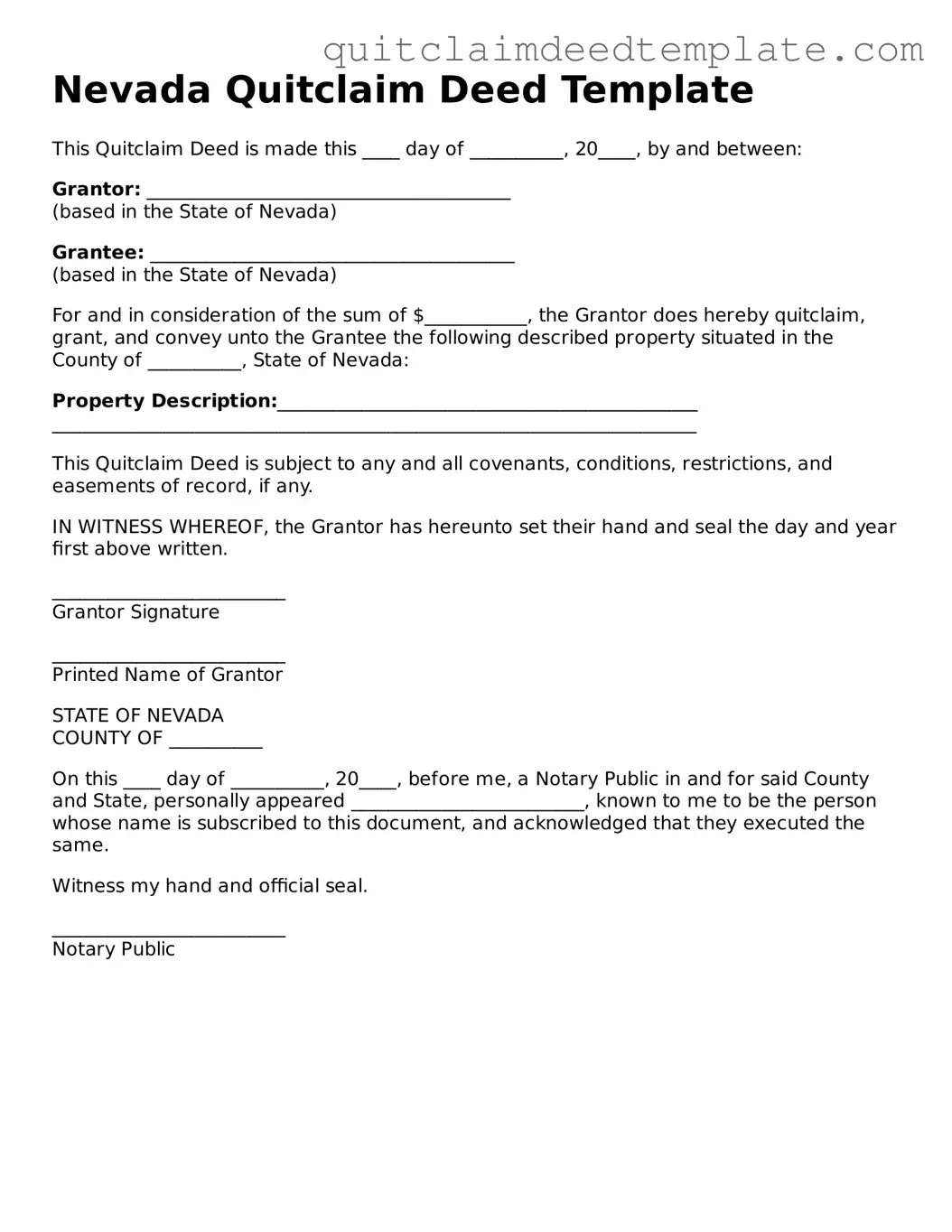Documents used along the form
When dealing with property transfers in Nevada, the Quitclaim Deed is a commonly used document. However, it is often accompanied by other forms and documents that help ensure the process goes smoothly. Here are five key documents you might encounter alongside a Quitclaim Deed.
- Grantor and Grantee Information Form: This document collects essential details about the parties involved in the transaction. It includes names, addresses, and other identifying information to ensure clarity in ownership transfer.
- Affidavit of Value: This affidavit provides an official declaration of the property's value. It can be crucial for tax purposes and helps the county assess the property's worth accurately.
- Property Tax Statement: This statement shows the current property taxes owed on the property. It is essential for the buyer to understand any financial obligations associated with the property before finalizing the transfer.
- Title Report: A title report outlines the legal status of the property. It reveals any liens, encumbrances, or other issues that could affect ownership, ensuring that the buyer is fully informed.
- Notice of Completion: This document is often filed after the completion of the transaction. It serves to inform relevant parties that the deed has been recorded and the transfer of ownership is official.
These documents play a vital role in the property transfer process, providing necessary information and ensuring that all legal requirements are met. Understanding each of these forms can help facilitate a smoother transaction and protect the interests of all parties involved.
